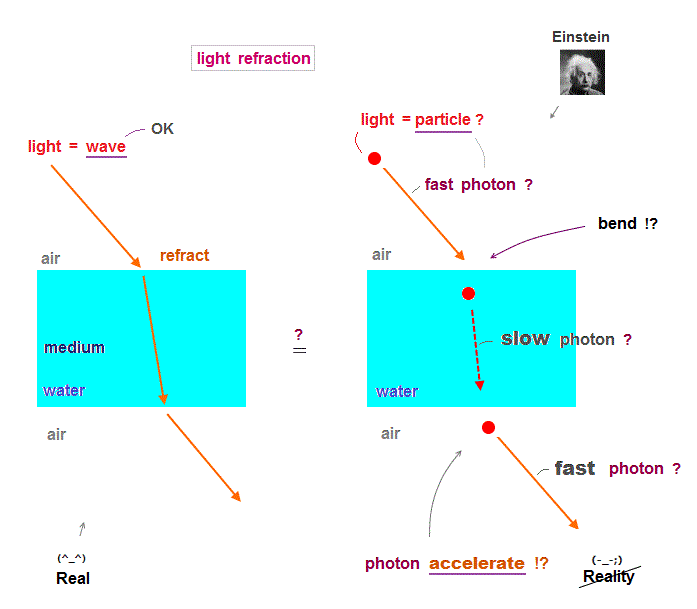
However, the experiment at the time did not have enough precision to rule out the possibility that the results were a statistical fluke. In 2007, MINOS researchers found a trend in their data that suggested neutrinos might be arriving early, as they do in the new CERN data. One of the best hopes to verify or disprove the findings comes from Fermilab's MINOS experiment, which also sends neutrinos flying underground over a similar distance to end up at the Soudan mine in Minnesota. Their results will be published Friday (Sept. The scientists also intend to gather more data and further analyze their measurements in order to establish them more fully, or refute them.
#PARTICLE TRAVELING FASTER THAN LIGHT FULL#
Realizing full well how scandalous the results will be if they are borne out, the scientists behind OPERA, led by Antonio Ereditato of the University of Bern, have decided to make their data public, in hopes of inviting scrutiny that could make sense of such radical findings. He suggested some theoretical solution, perhaps even involving string theory, could reconcile the two measurements. "So the observation is in dramatic conflict with the SN1987A result (which is not in doubt)."īut this doesn't mean that the OPERA results are wrong, Fox said. Yet the new OPERA discovery suggests that neutrinos actually surpass the speed of light by 60 nanoseconds over 730 kilometers, which corresponds to 2 parts in 100,000, "which exceeds the SN1987A limit by a factor of more than 2,000!" astronomer Derek Fox of Pennsylvania State University wrote in an email. This measurement was used to prove that neutrinos travel within 1 part in 100,000,000 of the optical speed of light. For example, a famous study from the Kamiokande II experiment in Japan of the supernova SN1987A, which lies about 168,000 light years from Earthin the Large Magellanic Cloud, found that light and neutrinos that departed this exploded star arrived at Earth within hours of each other. To rewrite this law would have broad-ranging implications, including even the possibility of time travel.Īnd the findings aren't just in conflict with existing theory, but other measurements as well. This cosmic speed limit, 299,792,458 meters per second (about 700 million miles an hour), forms the backbone of Einstein's seminal Theory of Special Relativity, published in 1905. "Quantum field theory, the mathematical theory on which basically all results in particle physics are based, has the property that signals cannot travel faster than the speed of light through a vacuum. "It's really thought to be an absolute speed limit," said Michael Peskin, a theoretical physicist at SLAC National Accelerator Laboratory in Menlo Park, Calif. However, nothing should be able to move faster than light through a vacuum. For example, certain particles are able to move more swiftly than light when travelling through water or oil.

Previous studies have found that certain materials can travel faster than light through a medium. "If these things are going faster than light, then these rules would have to be rewritten." "According to relativity, it takes an infinite amount of energy to make anything go faster than light," Plunkett told LiveScience. By making use of advanced GPS systems and atomic clocks, the researchers were able to determine this speed to an accuracy of less than 10 nanoseconds (.00000001 seconds). Neutrinos don't interact with normal atoms, so they simply pass through the Earth as if it were a vacuum.Īfter analyzing the results from 15,000 particles, it seems the neutrinos are crossing the distance at a velocity 20 parts per million faster than the speed of light.



The results come from the OPERA experiment, which sends sprays of neutrinos from CERN in Geneva to the INFN Gran Sasso Laboratory in Italy. New findings suggest the particles may even travel faster than light. The OPERA experiment at the CERN physics laboratory in Geneva sends tiny particles called neutrinos vast distances to study their properties.


 0 kommentar(er)
0 kommentar(er)
